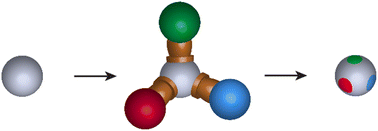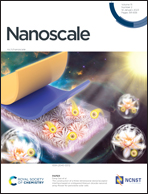Transfer of multi-DNA patches by colloidal stamping†
Abstract
Patchy particles have received great attention due to their ability to develop directional and selective interactions and serve as building units for the self-assembly of innovative colloidal molecules and crystalline structures. Although synthesizing particles with multiple dissimilar patches is still highly challenging and lacks efficient methods, these building blocks would open paths towards a broader range of ordered materials with inherent properties. Herein, we describe a new approach to pattern functional DNA patches at the surface of particles, by the use of colloidal stamps. DNA inks are transferred only at the contact zones between the target particles and the stamps thanks to selective strand-displacement reactions. The produced DNA-patchy particles are ideal candidates to act as advanced precision/designer building blocks to self-assemble the next generation of colloidal materials.

- This article is part of the themed collection: Emerging concepts in nucleic acids: structures, functions and applications


 Please wait while we load your content...
Please wait while we load your content...